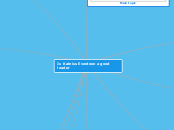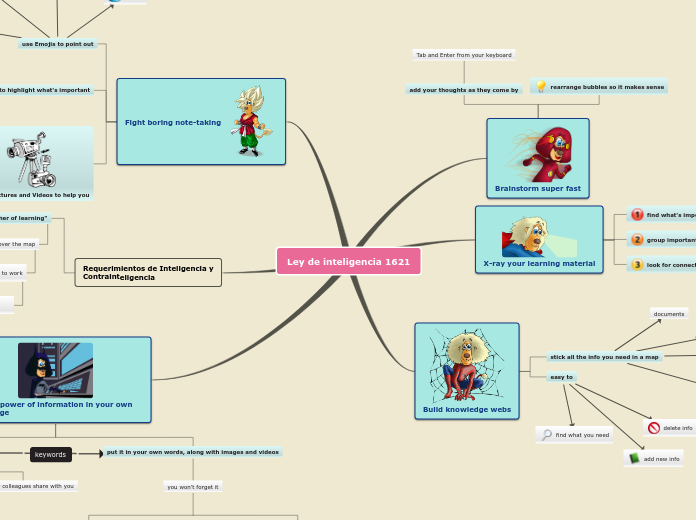Learning about the history of policies against Indigenous people since 1876 is significant to me because it educates both Indigenous and non-Indigenous communities about the long-lasting impacts of these laws. This shared knowledge fosters mutual understanding and respect, highlighting how these policies have affected various Indigenous groups. By learning together, we honor the knowledge and experiences each person brings, promoting a respectful exchange of ideas. This education is crucial for reconciliation, as it calls for actionable steps to address past injustices and build a more inclusive future.
4. Reciprocity
This conflict develops from a protagonist’s inner struggles and may depend on a character trying to decide between good and evil or overcoming self-doubt. This conflict has both internal and external aspects, as obstacles outside the protagonist's force them to deal with inner issues.
Give examples of man versus self conflict in the real world.
Johnson's story highlights the importance of appreciating others' stories, which contain valuable inferences and perspectives. Understanding these narratives is crucial for reconciliation, as it allows us to see the world through the eyes of Indigenous communities. This comparative understanding fosters empathy and respect, laying the foundation for meaningful reconciliation. By valuing and learning from their stories, we honor Indigenous knowledge and promote a more inclusive society.
assumptions vs. inferences
almost everything is inferred based on our own experiences. the author tells a story about how inferences can be faulty and how it impacts his future
can be connected to assumptions/inferences made about Indigenous people and how many of them are likely not factual
assumptions stem from nowhere and thus can create racist ideas, however inferences are conclusions based on facts
the universal value of storytelling
the knowledge regarding stories and how everyone is made up of stories
although storytelling is an important part of Indigenous culture, stories are for everyone (both Indigenous and non-Indigenous)
21 Things You May Not Have Known About the Indian Act by Bob Joseph
Give examples of man versus self conflict in a literary work.
How have I learned
shares knowledge respectfully, and states at the end how it has impacted First Nations today
many obscure and extreme policies against Indigenous communities since 1876
3. Relevance
A situation in which two characters have opposing desires or interests. The typical scenario is a conflict between the protagonist and antagonist. This is an external conflict.
A Short History of Indians In Canada by Unknown
Give examples of man versus man conflict in a literary work.
This is significant to my learning because it uses storytelling to create awareness about the impact of colonization and assimilation on Indigenous populations, thus ensuring the needs of Indigenous communities are addressed. By representing Indigenous people as birds and highlighting ineffective reconciliation attempts, the story acts as a call-to-action for community engagement. It involves Indigenous perspectives, valuing their knowledge and experiences, and emphasizes their importance. This approach broadens my understanding and appreciation of Indigenous histories allows me to have a more inclusive attitude toward reconciliation. This is significant not only for me, but for our society as a whole in order to have growth.
decreasing population
bird metaphor
how Indigenous communities are impacted by the governments' actions
These groups are represented as different species of birds, which are injured/dying to the presence of skyscrapers. These skyscrapers are a metaphor for the damages done to Indigenous land, and the injured birds represent the impact these damages have done to these communities.
Involves Indigenous communities (Navajo, Cree, etc.) throughout indicating how many groups have been impacted.
reconciliation 'attempts' vs. their impact
This quote represents how reconciliation 'attempts' done by the government have not done much to repair the damage done to Indigenous communities. In the story,they say that there is not much else that can be done because they 'attempted' to fix the issue. However, this links to current reconciliation attempts, and how they aren't the same since the land is not being returned.
"We tried turning off the lights in the buildings, we tried broadcasting loud music from the roofs" (Unknown, 3)
1. Respect
A more contemporary type of conflict, this situation results from humans involved in a struggle with man-made machines. This is an external conflict.
The Power of Story by Harold R. Johnson
As this conflict is more science fiction based, in real life we can't find such examples.
However, as technology became a big part of our lives there are some situations that man made machines affects our lives.
Find such examples.
How I learned + Its Significance
Johnson's idea refers to how stories make up everybody and their perspectives today. This idea considerably alters my perception of my day-to-day life and allows me to become more aware of others' perspectives. By acknowledging that each individual has their own unique experiences, it is easier to approach these unfamiliar concepts with an open mind.
Many Indigenous stories may not be entirely non-fiction, and instead consist of other peoples' experiences. These experiences turned into stories may allow for other individuals to learn how to live their lives better.
the significance of individual experiences and how that relates to stories
According to Johnson, everything that we experience is due to the inferences we make. We make these inferences based upon what we deem as factual. They also delve into assumptions, and how they aren't based upon facts. Thus why assumptions may lead to racist ideas. This statement directly correlates with the many falsely made assumptions about Indigenous communities.
Revenge by Thomas Anguti Johnston
Give examples of man versus machine conflict in a literary work.
This learning is significant to me because understanding key aspects of Indigenous cultures broadens my perspectives. By learning about Indigenous practices and traditions, I can honour their knowledge and recognize their voices through their stories. This approach allows me to remain open-minded, which is crucial for meaningful reconciliation.
How I Learned
utilizes storytelling
Thus, honouring how the Indigenous share knowledge with one another and their way of being.
incorporates various Indigenous traditions
Aspects such as spirits (the nanurluk) and their interconnection to nature is also referred upon. For example, after the lone man sets up his bait, he listens for a change in the heartbeat of the sea to sense if the nanurluk is coming.
The short story includes traditions such as seal hunting, whale hunting, and having the blade made out of red walrus tusk.
the significance of animals/nature/spirits in Indigenous cultures and how they are interconnected
due to: the blade being made out of walrus tusk and having engravings of various other animals each of whom held their own symbolism
revenge is a destructive cycle
the lone man blames the townspeople for his pain and loneliness and seeks out revenge by luring the nanurluk -- however he later regrets this when he discovers how destructive the spirit is
by pursuing revenge, one may foster further negative feelings which can lead to tragic outcomes
2. Responsibility
In this type of conflict, a character must take on society itself, and not a single person. The character stands at odds with societal norms and realizes the necessity to work against these norms. This is an external conflict.
Freeing the Pike by Richard Wagamese
Give examples of man versus society conflict in a literary work.
Why this learning is significant to me
It is important to understand the potential the impact of our ignorance. This story teaches me the value of recognizing and honoring Indigenous knowledge and experiences. By understanding the consequences of dismissing or undervaluing these cultural insights, I can approach future interactions and learning with greater sensitivity and openness. This awareness is essential for fostering genuine reconciliation and creating a more inclusive society.
How I have learned
ignorance alienating and isolating communities
Through this representation, Wagamese is able to teach the readers to do the opposite of what is shown. The story indicates that Indigenous culture should not be undermined or disrespected -- rather it is important to honour it. Freeing the Pike does an excellent job at being inclusive of Indigenous voices and demonstrating how greatly others' actions have impacted them.
Throughout the text, the protagonist frequently refers to the family he was adopted into, and how they do not understand his connections with the land and river. The family's laughter and lack of interest in his fishing trips illustrate a lack of respect for the protagonist's cultural practices. Their inability to appreciate his solitary fishing trips and his connection to nature likely makes him feel alienated. His motives for seeking connection with nature are deeply tied to his Indigenous heritage, yet these motives are not recognized or respected by his family.
utilization of metaphors
Wagamese utilizes powerful metaphors throughout the text, which may provide a double meaning. The pike can represent Indigenous communities, specifically Indigenous children who were forced to go to residential schools. This is apparent through the statement "its beauty was already beginning to fade" (Wagamese, 1). The quote refers to Indigenous culture as the pike's 'beauty' -- in the sense that the residential schools caused Indigenous culture to 'fade'. Additionally, when the protagonist initially catches the pike, he needs to step into the water. This is also another form of symbolism, as by stepping into the water he is invading the pike's home. Moreover, the fish may represent meaning in Indigenous culture. The protagonist states that "for the Indian that lived in [him], that fish was honour and respect and love". Thus, through this meaning and the metaphors aforementioned, Wagamese utilizes them as a way to incorporate Indigenous teachings whilst allowing readers to understand their impact.
What I learned
how not understanding may significantly impact and alienate communities
“They never understood how the land, rivers in particular, fleshed out my insides, soothed me, comforted me… that the teachings of that clan membership would define me and give me purpose” (Wagamese, 1).
the connections between the land, rivers, and Indigenous peoples
By: Aleezay Khan
The 4Rs of Indigenous Learning: A Reflection.
Conflict is present everywhere in the world around us. We experience conflict on a daily basis, and it can be minor or major.
Conflict in a story is a struggle between opposing forces. Characters must act to confront those forces and there is where conflict is born. If there is nothing to overcome, there is no story. Conflict in a story creates and drives the plot forward.









